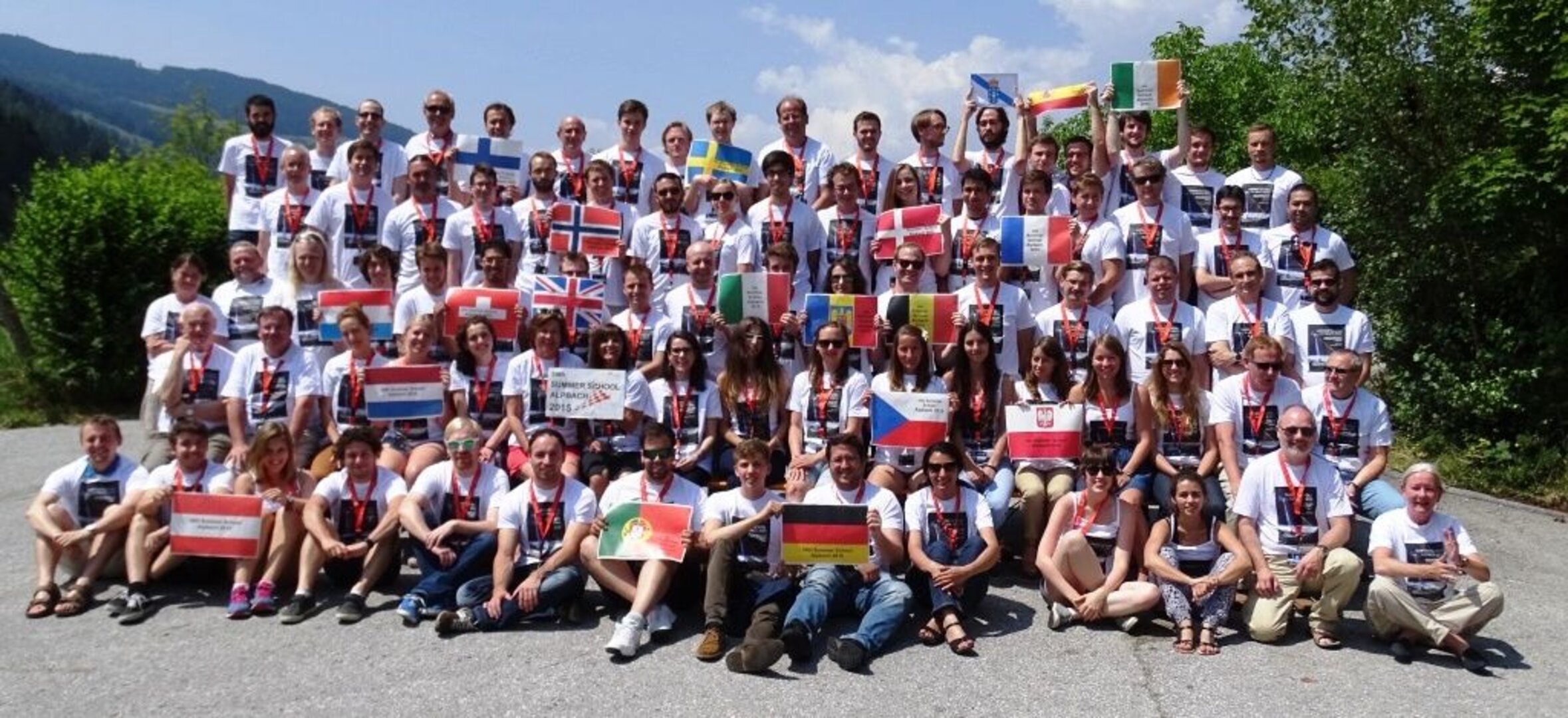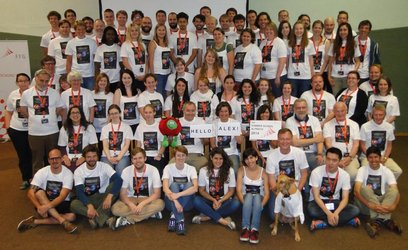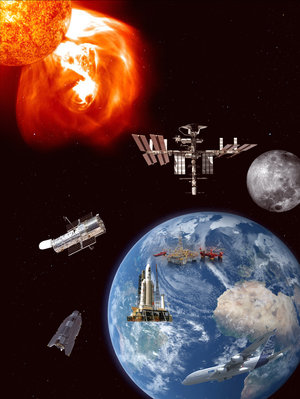Designing space missions to enrich quantum physics research at Alpbach Summer School
Sixty European science and engineering students from 19 of ESA’s 22 Member States recently attended the 2015 Alpbach Summer School, held in the beautiful Austrian Tyrol. This year’s meeting, held from 14 to 23 July, focused on quantum and fundamental physics in space.
During their stay at Alpbach students attended lectures and participated in workshops. They were divided into four teams and asked to design their own innovative mission to study how satellite missions could help develop and enrich quantum physics research, and see how future satellite missions could benefit from quantum physics in general.
The space missions designed by the students looked at how to make discoveries in gravitational wave astrophysics, as well as how to verify the fundamental principle of equivalence in Einstein’s theory of General Relativity. On the last day of this 10-day learning experience, each team presented their mission design to an expert review panel chaired by Dr. Roger Bonnet, as well as their fellow students, tutors, and lecturers.
Dr. Bonnet was very impressed by the quality of the space mission designs the students presented: 'The jury was very impressed and had the feeling that a new scientific community had risen above the horizon - a community that will increase the number of space users and that will benefit from the high potential of applications in this new field, both in industry and in science. Once again the Alpbach Summer School has created a miracle - all of the teams have made a strong impression on the jury because of their ability to get acquainted with a topic in just a few days.'
The proposals put forward by each team were the following:
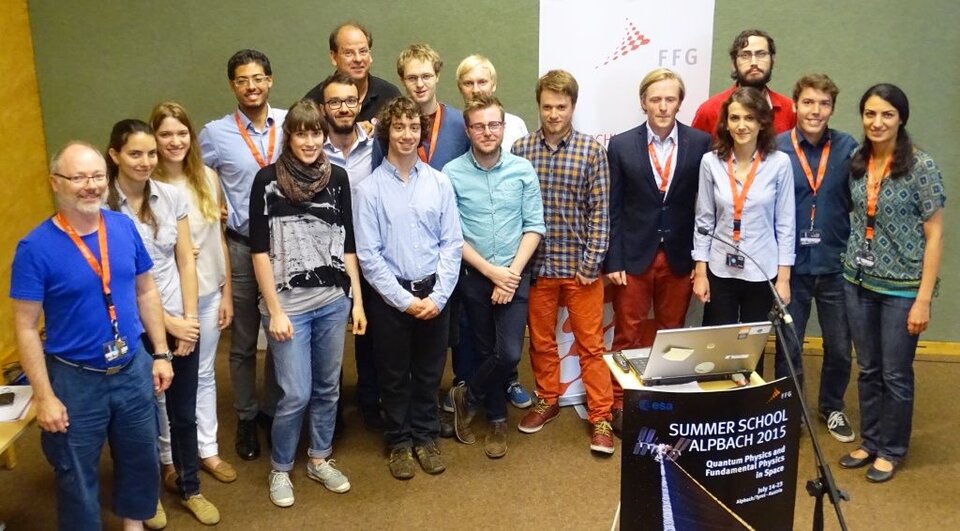
Team Blue: JANOS
This experiment was designed to examine the effect of gravity on quantum systems. The basis of the experiment is a single-photon interferometer, distributed between an Earth orbiter and a ground station. The photons are split in a superposition to explore how gravity acts on them, as compared to a classical system, aiming at confirming or refuting the hypothesis that there is a fundamental effect of gravity on quantum systems.
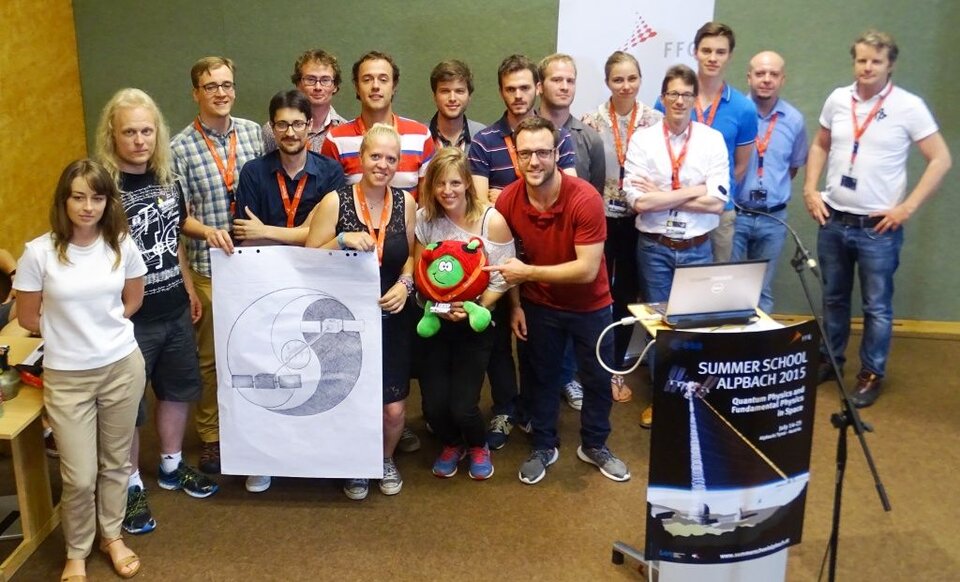
Team Orange: EPIG (Entanglement Propagation in Gravity)
The space mission proposed tests a new model that was only recently published by T. Ralph et al., which describes how quantum entangled photons are affected in a gravitational field. The mission itself consists of two satellites linked to the ESA Optical Ground Station (OGS). One satellite (Albert) is placed in a 3,000 x 700 km elliptical orbit, while the second (Erwin) is placed in a 700 km circular orbit. Both satellites are designed to be identical and to carry one photon source, two local detectors, and two telescopes, thus being capable of symmetrical, asymmetrical, and bidirectional measurements with both space-space and space-ground links.
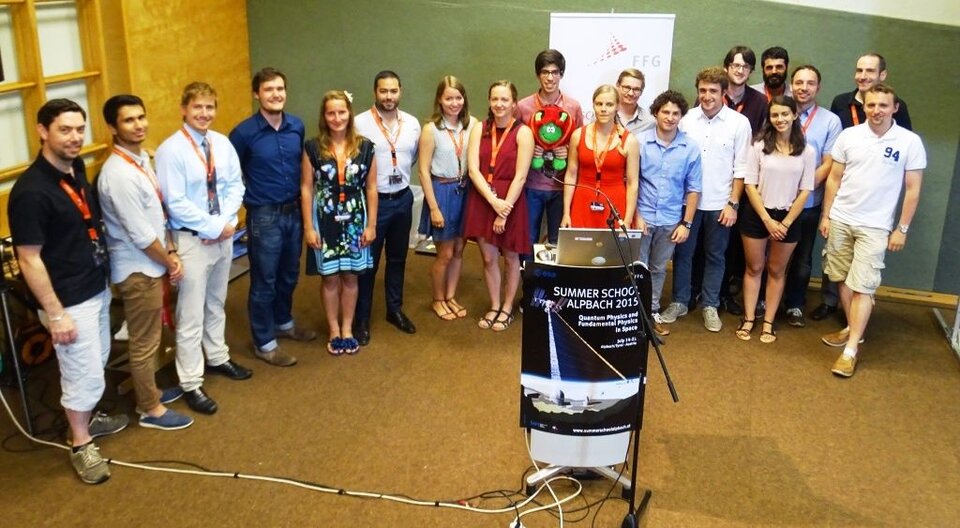
Team Red: GLINT (Gravitational Wave Laser INterferometry Triangle)
The existence of supermassive black holes at the time when the Universe was only one billion years old is one of the mysteries of modern science. We do not understand the physical processes and evolution that took place in the early Universe and due to the limitations of receiving electromagnetic radiation from these regions we have not been able to study this interesting era. However, gravitational waves predicted by General Relativity provide us with the means to probe deeper into the history of the Universe. With GLINT we will be able to measure gravitational waves from the formation and evolution of the first black holes, with redshifts of 15 < z < 30 in the frequency range 0:01 -1 Hz. With a strain sensitivity of 5 x 10-24 Hz, GLINT will also be sensitive to a host of other gravitational wave phenomena. The gravitational waves will be measured using laser interferometry to monitor the separation of test masses in free-fall. These test masses will be shielded from spurious forces in a constellation of three satellites in a geostationary orbit.
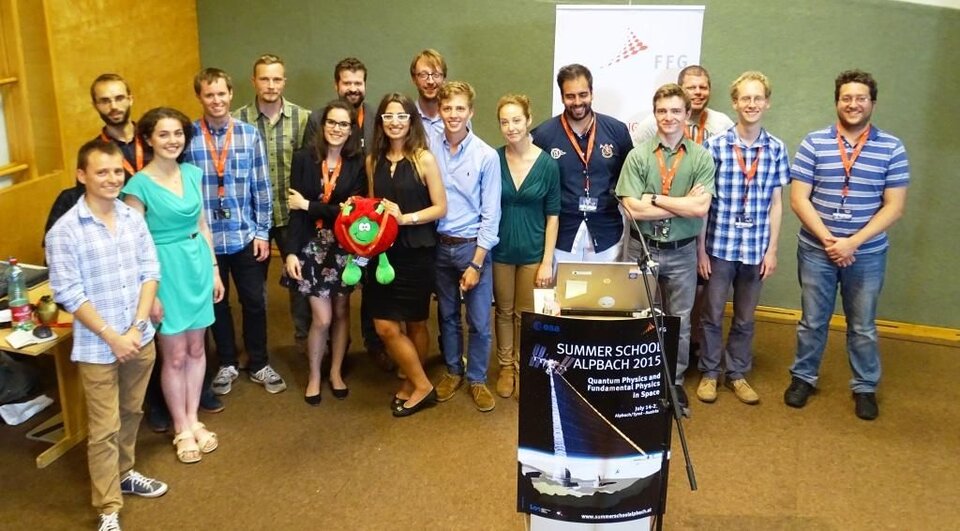
Team Green: GREEN (General Relativistic Effects on Entanglement)
GREEN will probe the domain of the intersection of these two theories. With the possibility of producing results that conflict with either QM or GR, or perhaps both, GREEN aims to provide new evidence to aid the development of emerging theories of quantum gravity. This will be achieved by measuring a general relativistic effect on a quantum system - more specifically a gravitational redshift induced on entangled photons. GREEN employs a satellite in an elliptical orbit around Earth sending entangled photons to a ground station. Firstly, decoherence due to the large separation or gravitational potential difference will be investigated by performing a Bell test. Secondly, by using the large gravitational potential difference between ground and space, together with state of the art technology, it will be possible to detect differences down to 1 % from the classical gravitational redshift value for the entangled photons. The impact of the result will provide further knowledge on the validity of QM and GR, and possibly trigger further development of a unifying theory.
After careful deliberation, the 'oscars' were awarded as follows: Team Green for Best Science Case; Team Blue for Best Technical Case; Team Orange for Most Competitive Mission; and Team Red for Best Presentation.
Background
Held annually since 1975, the Alpbach Summer School provides in-depth teaching on different topics of space science and technology, with the aim of advancing the training and work experience of European students, young scientists and engineers. The Summer School is intended to enable students to apply the knowledge derived from lectures, to develop organisational and teamwork skills, and to encourage creativity.
The Alpbach Summer School 2015 was organised by the Austrian Research Promotion Agency FFG. It was co-sponsored by ESA and the national space authorities of its Member and Cooperating States, with the support of the International Space Science Institute (ISSI) and Austrospace, the association of Austrian space industries and research institutions.


